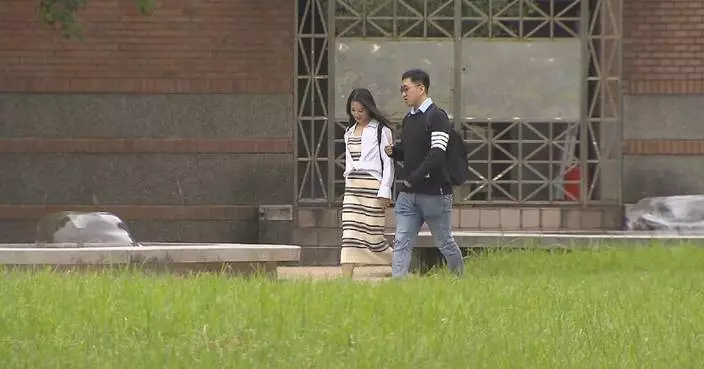Rampant dengue fever across Brazil has forced many families to call off their weekend getaway plans as the country's tourism sector takes a hit from the mosquito-borne disease.
Brazil had reported a record of more than 4.27 million cases of dengue and 2,197 deaths in 2024, the highest number ever registered for the epidemic, the country's federal health authorities said on Saturday.
A water park in the resort town of St. Elizabeth, located 70 km northeast of Sao Paulo, is normally packed with tourists in the scorching summer, with hotel reservations often made a week in advance. In recent days, however, the park has seen a marked decline in visitors due to cases that have been reported in the town and surrounding communities.
To help ensure the safety of visitors, the park's management team has sent in additional employees to intensify prevention measures.
"We add disinfectant in the swimming pool to prevent mosquitoes, and we have workers in charge of cleaning the park," said Leonardo, a worker.
"There used to be a lot of visitors. Especially on Saturdays and Sundays, our park used to be packed with tourists, double or triple what it is now," said Fernandes, a tour guide.
In the same period last year, Brazil saw more than 900,000 cases, while the total number of probable and confirmed cases in 2023 surpassed 1.6 million.
In South America's largest city Sao Paulo, home to almost 13 million inhabitants, the dengue epidemic has appeared in every neighborhood, according to the City Hall.
According to the ministry, the surge in cases this year is related to factors such as climate change and the circulation of multiple serotypes of dengue virus.

Dengue fever deals blow to Brazil's tourism sector
Chinese scientists have recently worked together and rebuilt the face of an ancient Chinese ethnic minority emperor via cutting-edge DNA technology.
Emperor Wu of the Xianbei-led Northern Zhou Dynasty (557-581), also known as Yuwen Yong, was an ambitious leader who died at 36. He belonged to the Xianbei nomadic group, which originated from the Mongolian Plateau.
The tomb of the emperor was discovered in 1993 in a village of the city of Xianyang in northwest China's Shaanxi Province. His skull and bones were discovered during an excavation held in 1994 and 1995 at the site of his tomb.
In late March this year, scientists led by the Shaanxi Provincial Institute of Archaeology and the Institute of Archaeological Science of Fudan University managed to decode key features of the emperor and speculate about his cause of death. The emperor might have died from chronic arsenic poisoning due to long-term use of a pellet, which was believed by ancient people to achieve eternal life.
"First, the skeleton can be used to determine age. Second, in terms of age and gender, some pathological research can also be done to see if he had any fractures or other (diseases)," said Zhang Jianlin, a researcher from the Shaanxi Provincial Institute of Archaeology.
Obtaining high-quality genomic data is crucial for restoring the face. Through DNA paleogenomics techniques and optimized DNA extraction, database building and capture methods, more history was revealed.
"First, we have done the shorter fragments enrichment method, which is a DNA extraction method. In addition, we have developed some more sensitive database building method suitable for ancient samples with short fragments. You can regard it as a method to amplify the genetic signal, the extracted DNA. The third is that we have developed a capture method that is more suitable for this kind of highly degraded ancient samples. So we have optimized and improved our approach from three aspects at the same time," said Wen Shaoqing, an associate professor of the Institute of Archaeological Science of Fudan University.
The reconstructed face showed that Yuwen Yong had black hair, yellow skin and brown eyes, while his appearance was typical for people from East or Northeast Asia.
Wen said that with the help of the DNA technology, the accuracy of facial restoration can reach 90 percent.
"As for the accuracy of (facial restoration), the current situation is that if there is a skull as a basis, its accuracy will be relatively high," said Wen.

Scientists rebuild face of ancient emperor using advanced DNA technology










